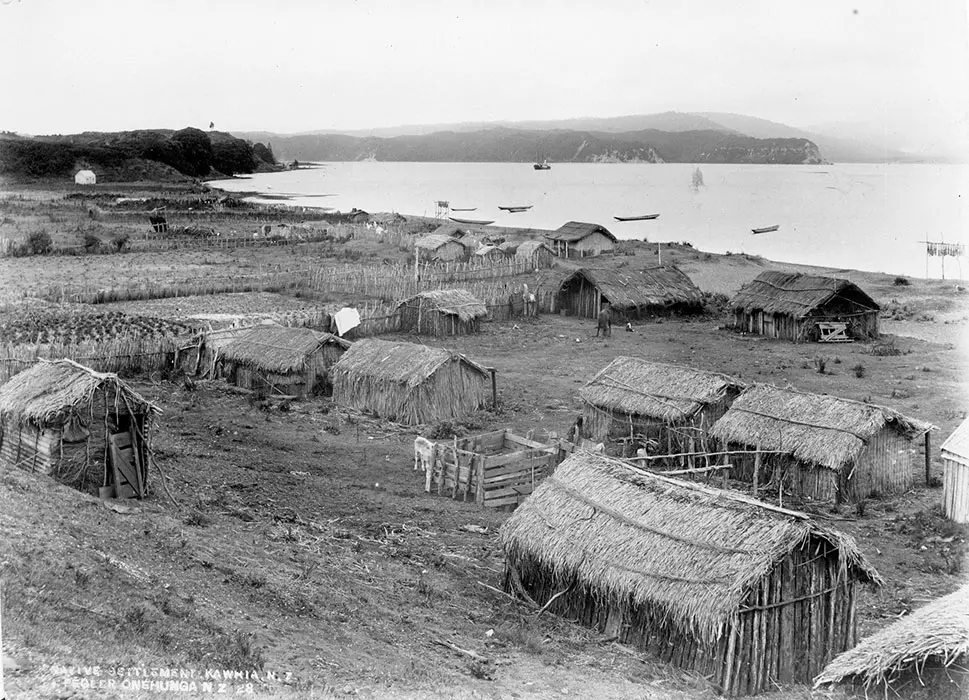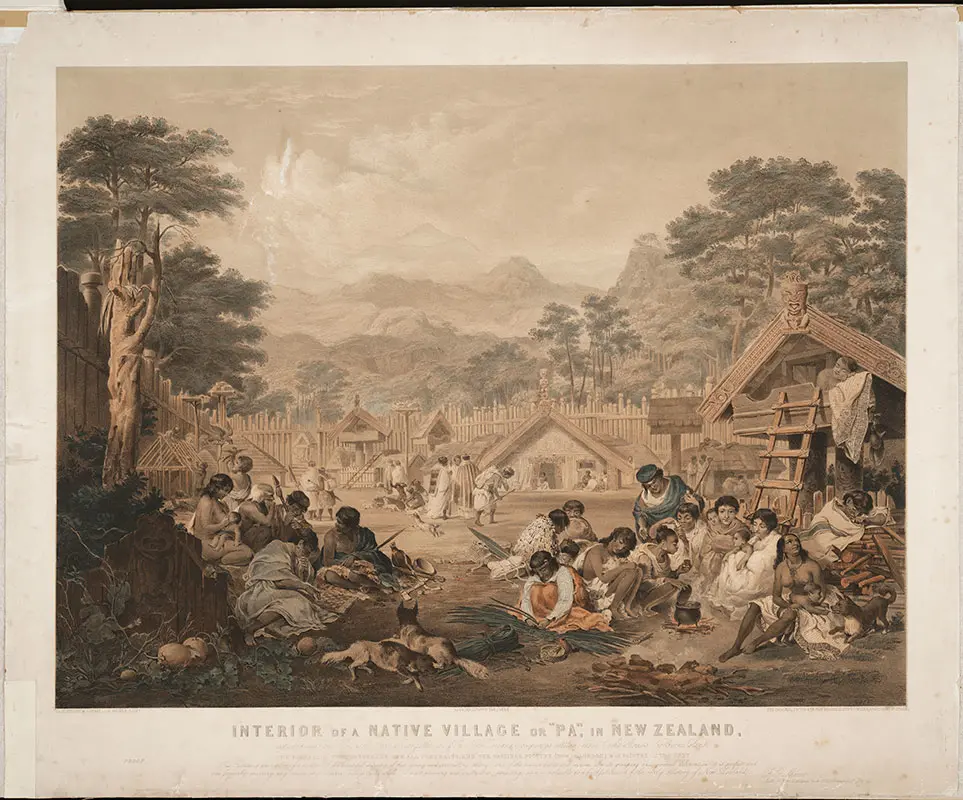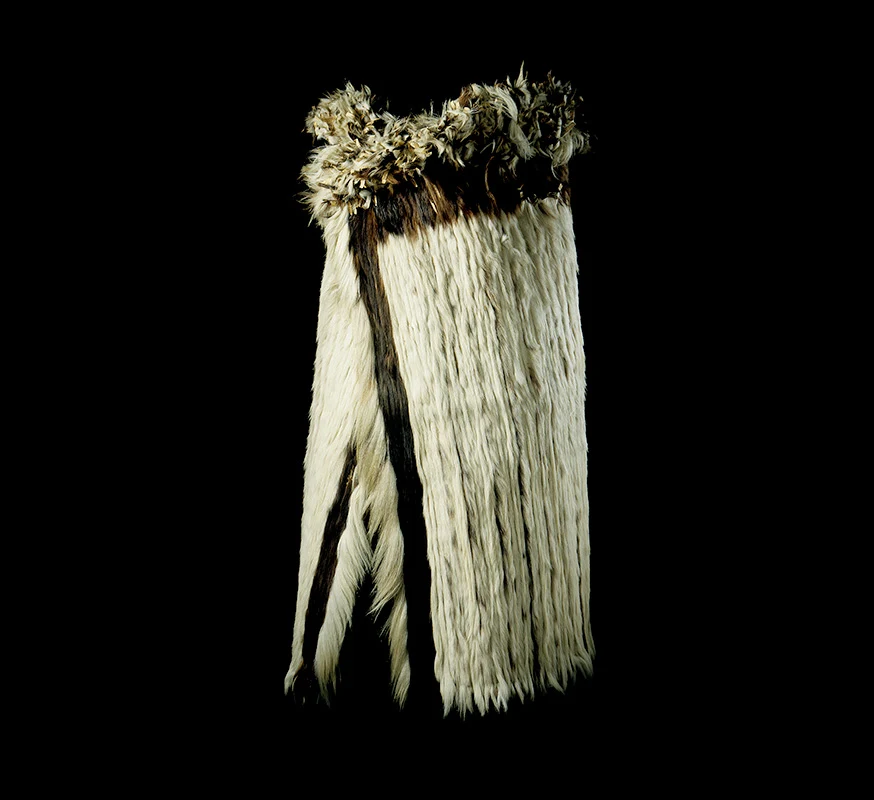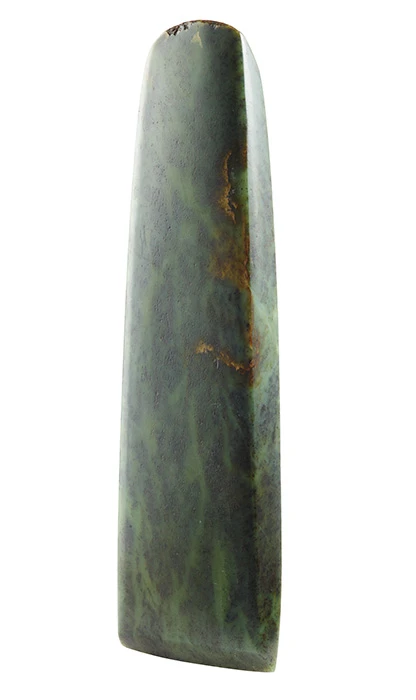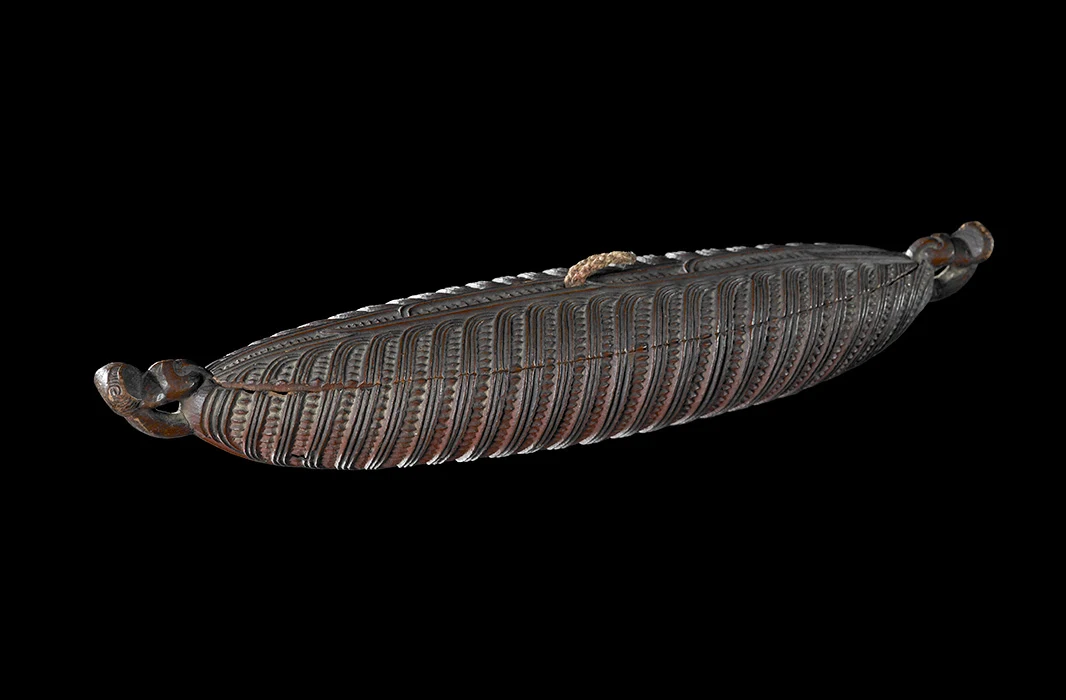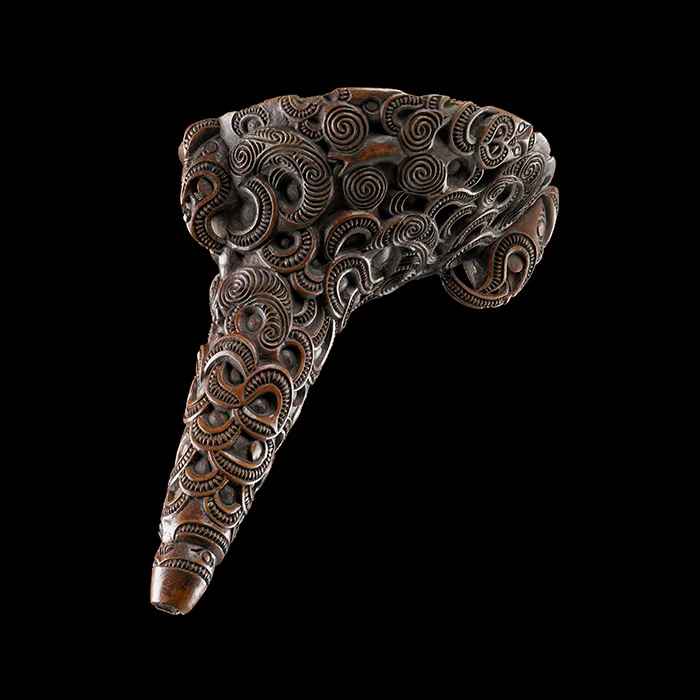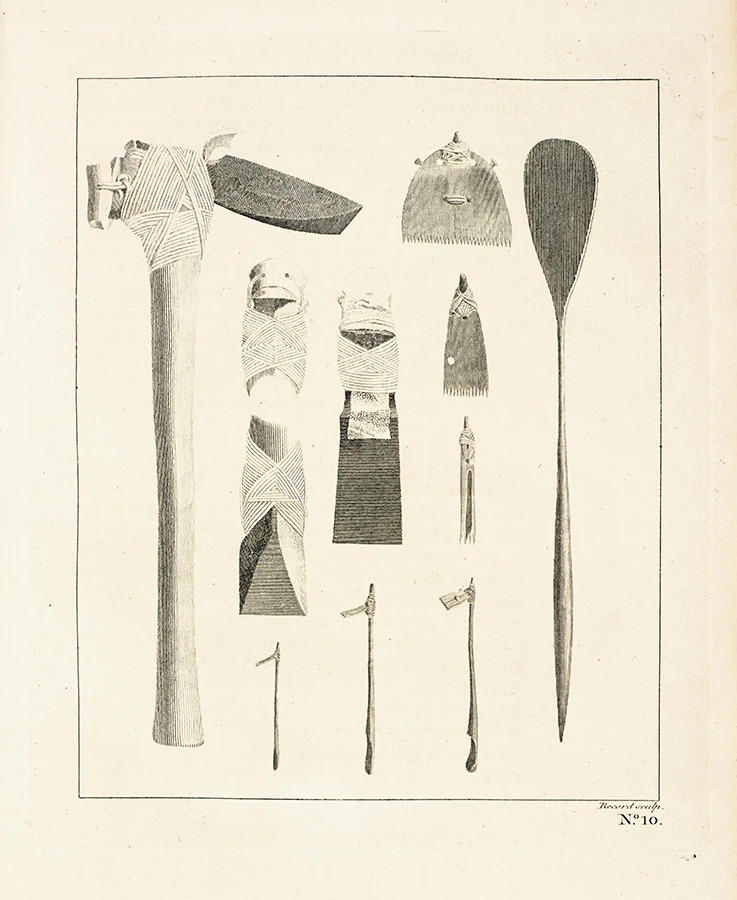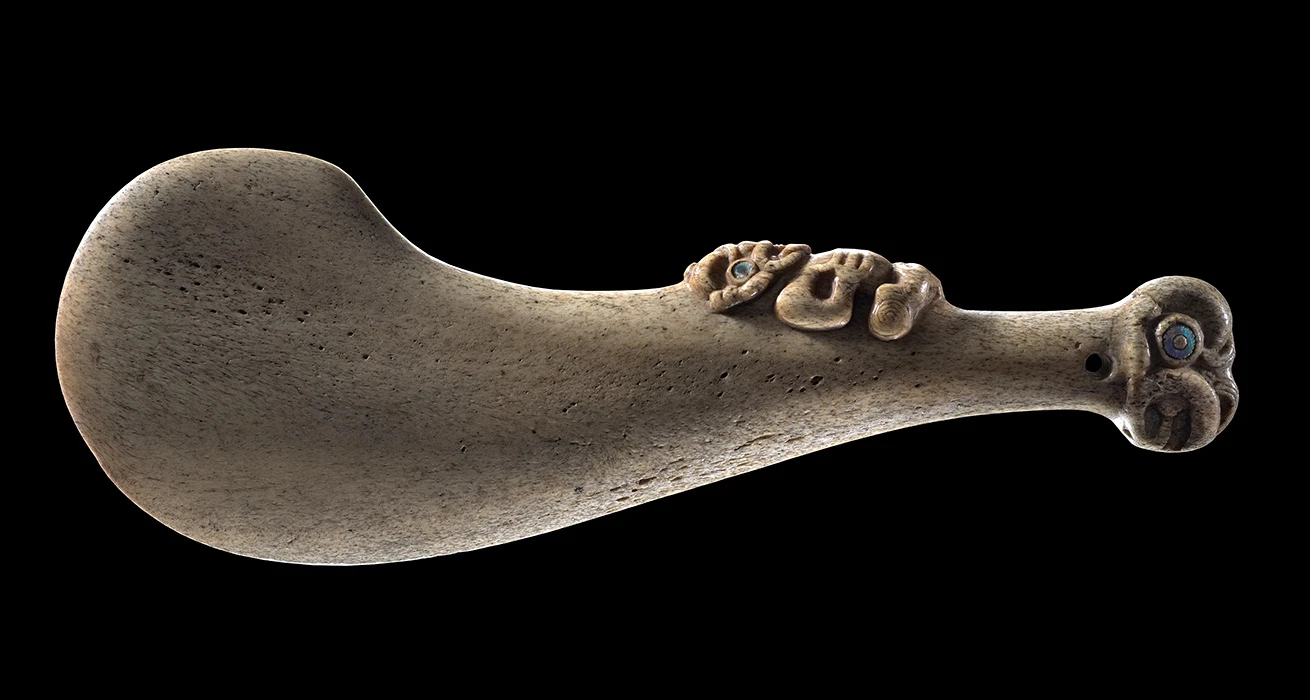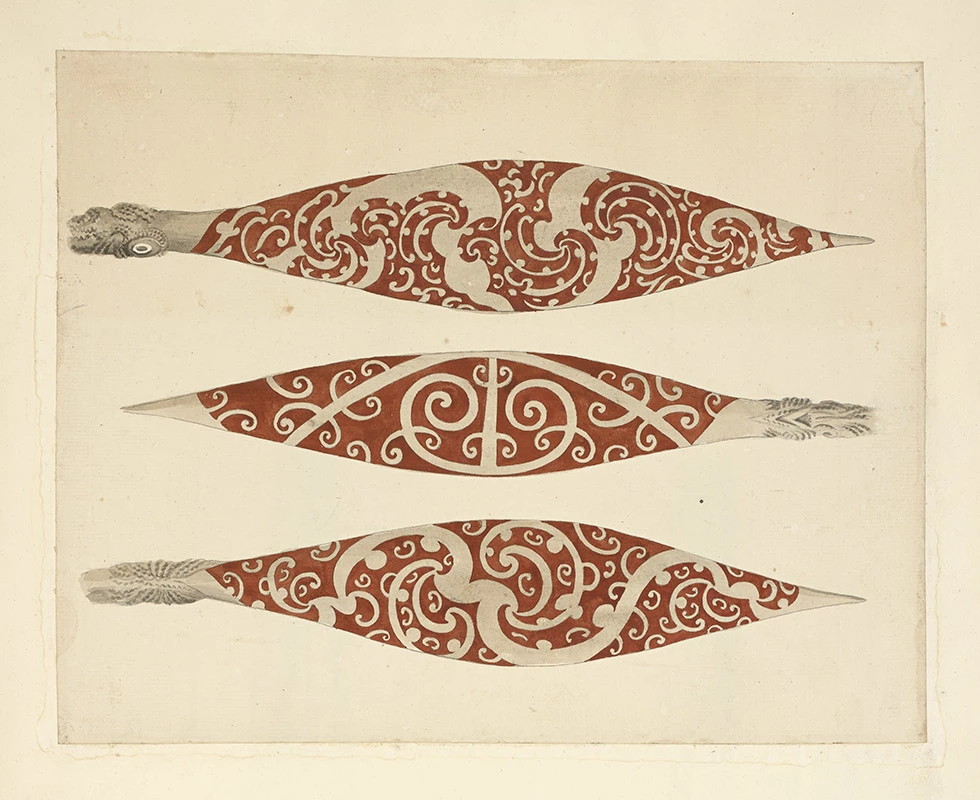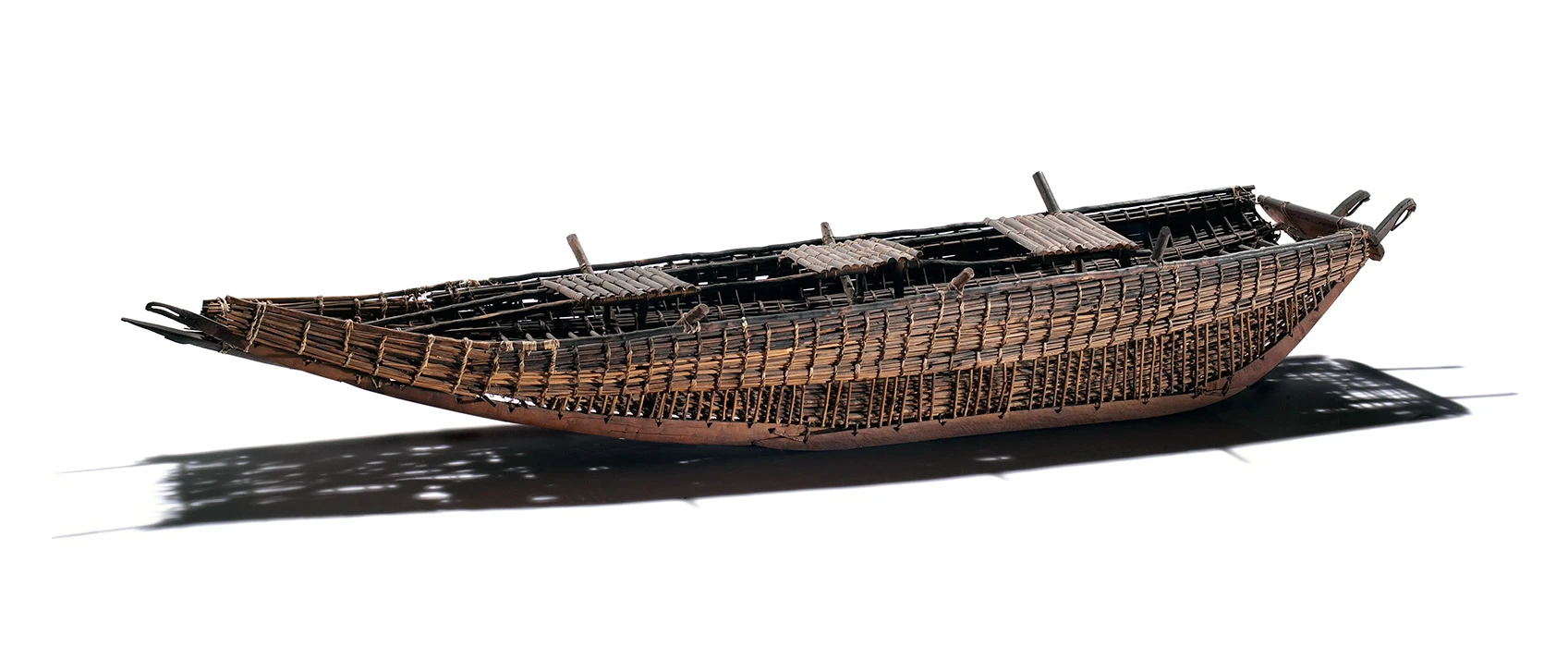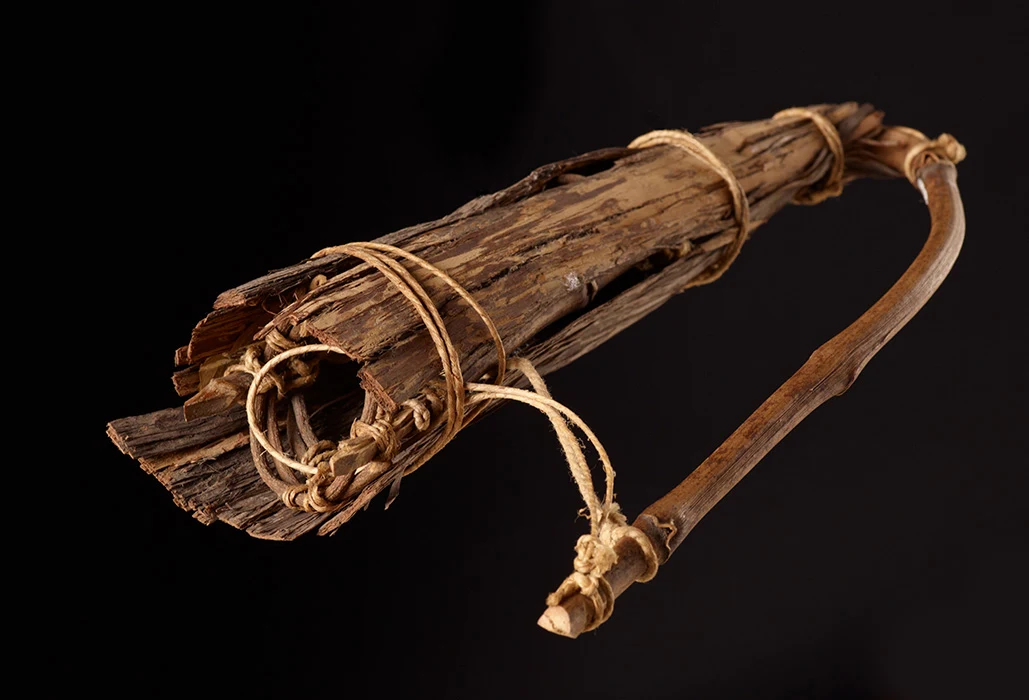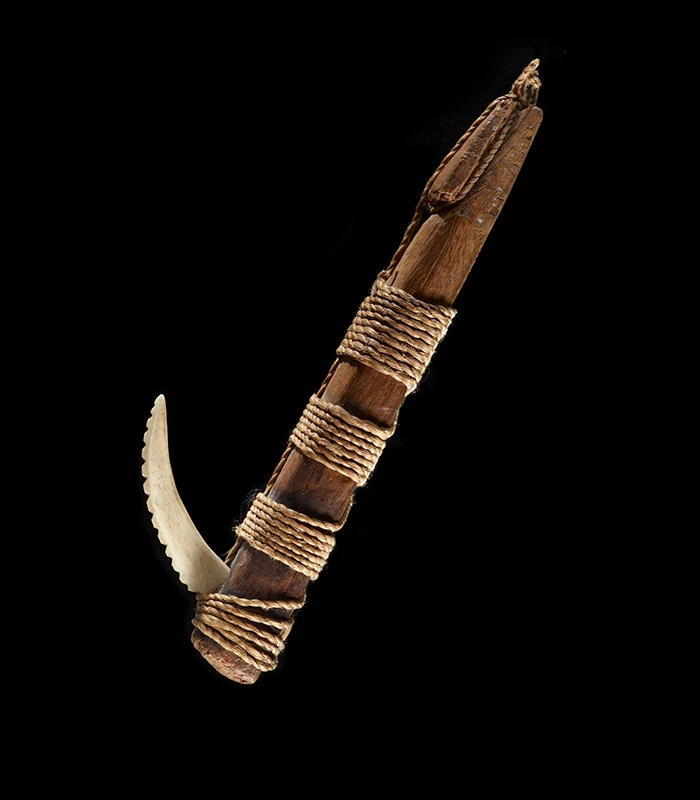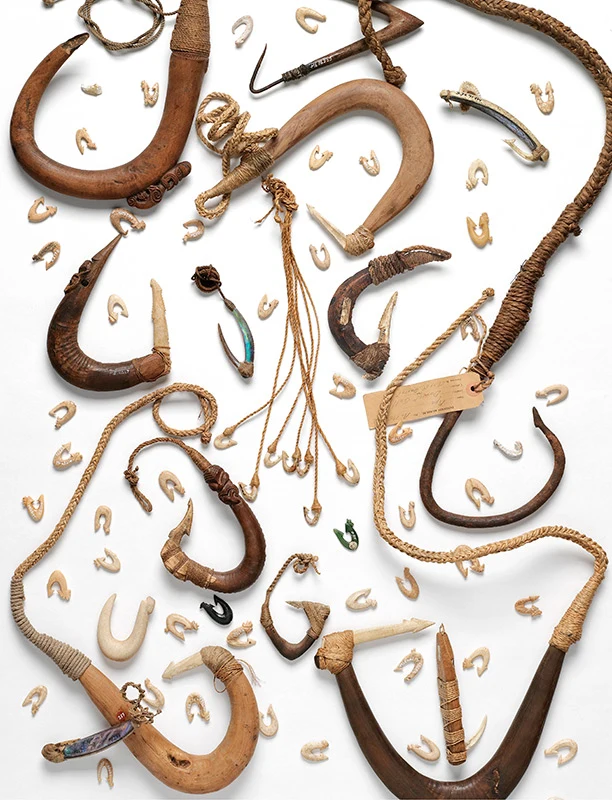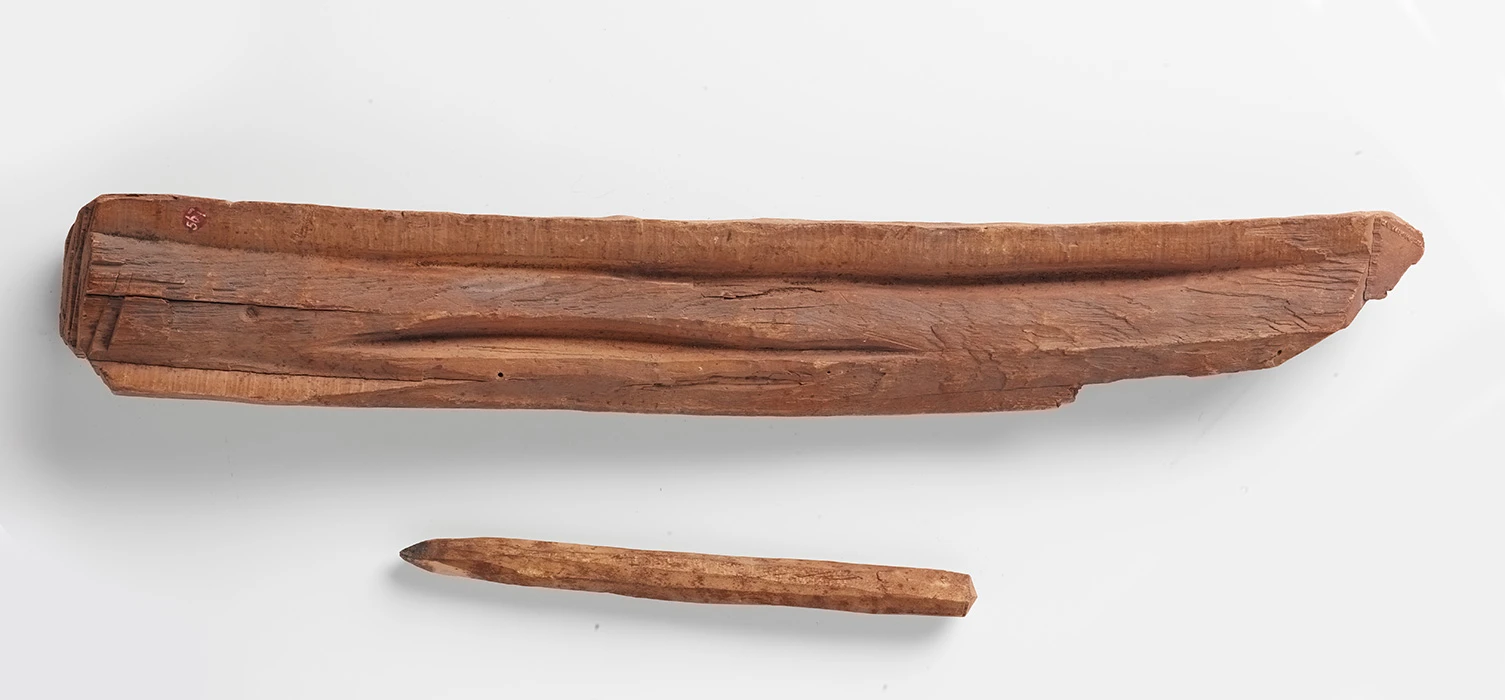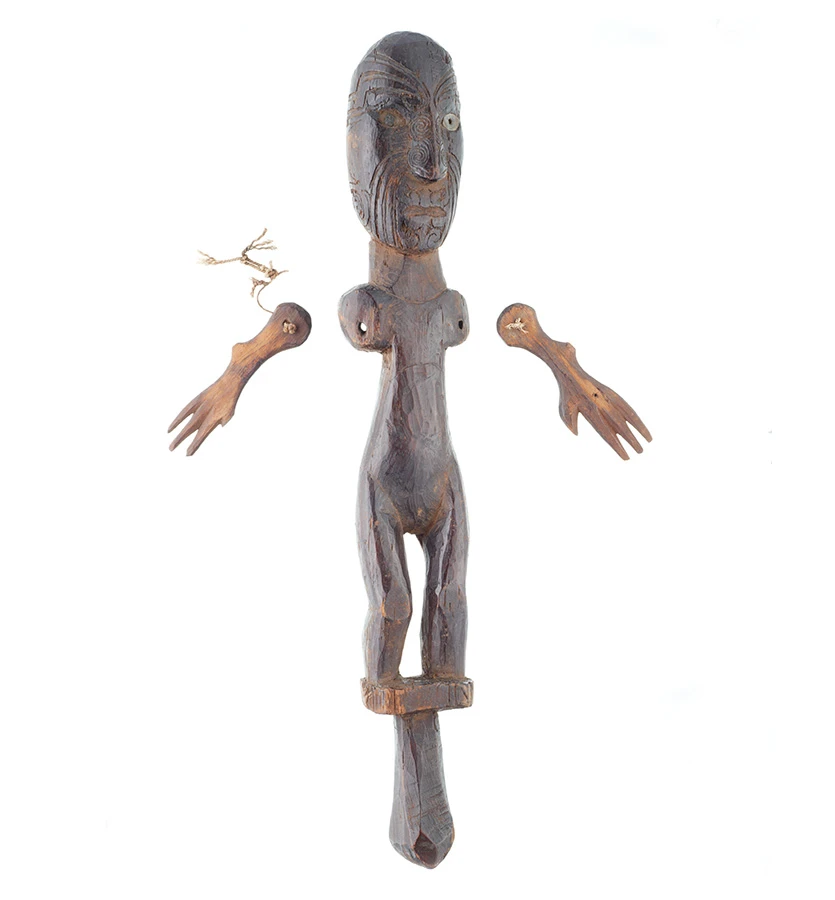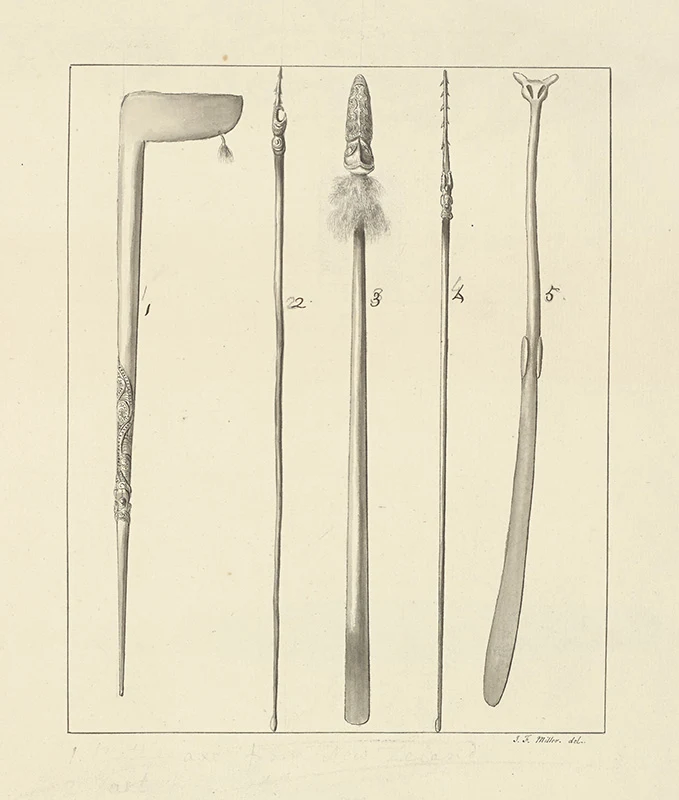
Ngā nohonga me ngā porihanga Māori | Māori settlement and society
I tēnei whārangi | On this page
Discover more about life on the pā in the numbered text.
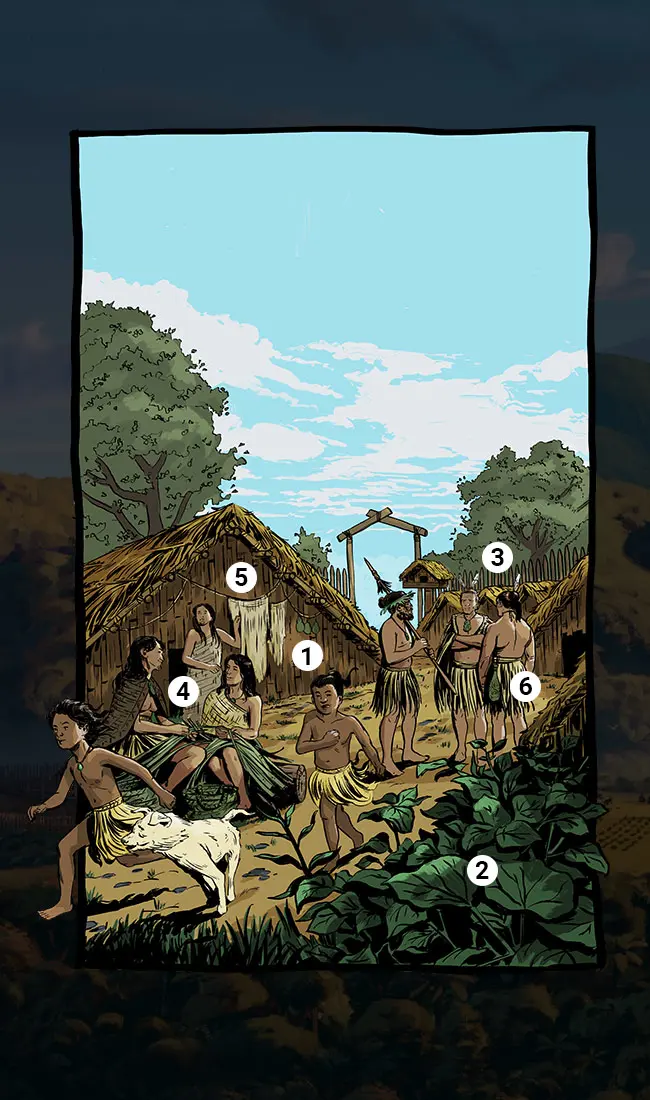
1. Te reka hoki — me te whai tikanga
Kai ai te Māori i ēnei hue i te kākārikitanga. I whakamaroketia ngā mea nunui, ka tīkarotia, hei pupuru wai. Ka rawe!
Yum — and useful too
Māori ate these hue, or bottle gourds, when they were green like this. Big ones were dried and hollowed out to hold water. Handy!
2. Me otaota, kaua ngā pire
He ngaupuku? Ka taea e koe te whakamahi i ēnei rau kawakawa hei āwhina.
I whirinaki anō te iwi Māori ki ngā rongoā kia hauora ai — ā, kāore i tino nui ngā māuiui i mua atu i te taenga mai o te Pākehā.
Plants, not pills
Sore stomach? You could use these kawakawa leaves to help.
Māori relied on rongoā (traditional medicine) to stay healthy — and there weren't many diseases before Europeans arrived.
3. He huruhuru, he kura
I whakaaetia ngā tino tāngata whai mana o ētahi hapū kia mau remu manu i ō rātou makawe. I mauria ētahi kururemu manu 12 e ngā rangatira, i te haerenga ki te pakanga.
A treasure of a feather
The most important people in some hapū (tribal groups) were allowed to wear bird feathers in their hair. Some chiefs wore 12 tail feathers when they went into battle.
4. He pounamu kura
Kāore anō ngā tāngata o Te Moana-nui-a-Kiwa kia kite i te pounamu i mua. I tahuri rātou ki te kimi tikanga mahi hou hei whakairo i tēnei kōhatu mārō hītararī hei taonga, pēnei i te hei-tiki nei.
Mai i ngā atua ki ngā tūpuna, he tini ngā pūrākau mō te hei-tiki.
Precious pounamu
Pacific people had never seen pounamu (greenstone) before. They had to come up with new ways of carving this super-hard stone into treasures like this hei-tiki pendant.
From atua to ancestors, there are many different stories about hei-tiki.
5. Te muka kaha whāioio
Kei te hiahia koe ki tētahi aho pakari? I ako anō ngā tūpuna o Te Moana-nui-a-Kiwa ki te huri i te harakeke hei muka pakari. I miroia, i whiria hoki hei mahi kupenga hao ika, taura, hei mahi hū hoki.
Mighty muka
Need a piece of strong string? Pacific settlers learned to turn flax into tough muka fibre. They wove and plaited it to make fishing nets, ropes, and even shoes.
6. He patu tino whakamīharo
Kāore koe e hiahia kia tukia e tētahi mere pounamu mārō hītararī. He tino taonga nui hoki enei, he mea tukutuku i roto i ngā whānau.
Special weapon
You wouldn't want to be hit by a rock-hard mere pounamu (club). These weapons were precious treasures too, handed down through families.
Te ao turoa me ngā kai | A look at daily life and food
Discover more about māra kai in the numbered text.
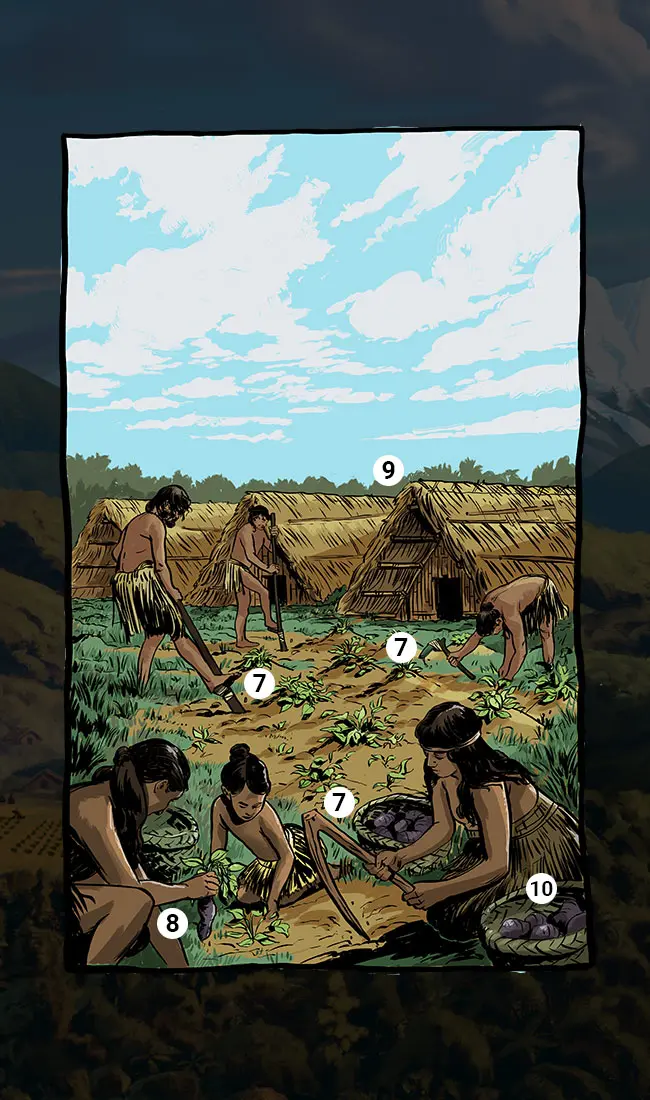
7. Keria
He rawe ngā kō pakari, ngā kō koi hei kerikeri i te māra kūmara. Ko ētahi o ngā kō ka tae ki te 3 mita te roa — e rua rawa whakaroatanga atu i a koe! Mā tō waewae e pana ki te hamaruru (pae mō te waewae) i raro rawa.
He rawe tēnei mea te ketu hei wāwāhi i ngā oneone huri noa i te kūmara, hei hauhake.
He rawe hoki te timo, he mea tārei ki ngā peka rākau, hei wāwāhi i te oneone mārō.
Dig it
Strong, sharp kō were great for digging kūmara beds. Kō could be up to 3 metres long — twice as tall as you! Just push with your foot on the bar near the base.
Ketu were good for loosening soil around kūmara, and digging them out.
These are timo, shaped from tree branches, were perfect for breaking up the soil.
8. He kūmara pea tēnei?
Āe, i ngā rā o mua he iti te kūmara, he whāiti hoki — kāore i pēnei me ngā kūmara mōmona, kūmara nui hoki e kainga nei e tātou i ēnei rā. Ko te ingoa o tēnei momo he taputini.
Could this be kūmara?
Āe, kūmara in Aotearoa were once small and skinny — not like the fatter, rounder types we eat today. This variety's called taputini.
9. Ngā kai i raro i te tuanui
Nā tēnei rua kūmara (rua rokiroki kūmara) ka noho maroke tonu te kūmara, ka noho haumaru hoki i ētahi kiore matekai me ētahi atu kaikōkiri i te pā.
Ka karia he rua ki te whenua. Ka rere atu te ua i te tuanui tāpatu ki te kōawa i te taha matau.
Kai under cover
This rua kūmara (storage pit) kept precious kūmara dry, and safe from hungry rats and other invaders.
Pits were dug into the ground. Rain flowed off the thatched roof into the drain on the right.
10. He otaota, he tini ōna take
I rānga, i whiria hoki ngā rau harakeke hei kete, hei whāriki, hei kōnae, aha atu, aha atu. He mea whai take hoki ngā wai kōrari, ngā paiaka, me te pia hoki o te otaota. Ka kīa atu ki ngā rangatira Māori kāore te harakeke e tupu ki Ingarangi ka kī atu rātou, 'Me pēhea hoki te noho i reira, ki te kore te harakeke?'
All-purpose plant
Flax leaves were woven into kete (bags), mats, baskets, and more. The nectar, roots, and gum of the plant were also useful. When Māori chiefs were told flax didn’t grow in England, they replied, 'How is it possible to live there without it?'
